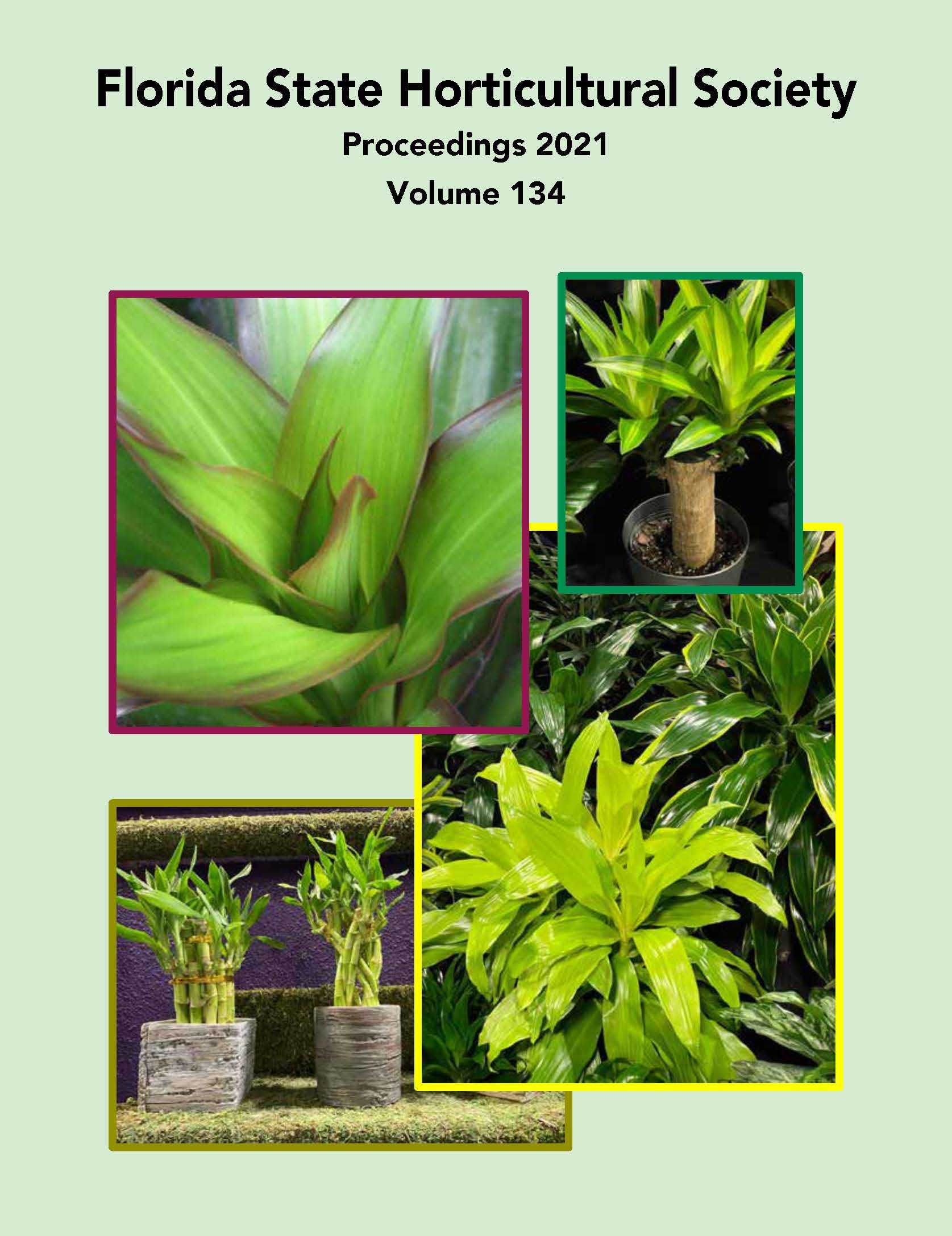Abstract
Passion fruit can be grown in warm climates, which allows Florida growers to grow them throughout much of the state. Passion fruit has great potential for both value-added products as well as fresh fruit. Passion fruit can be used to produce juice, wine, jellies, candies, ice cream, and other value-added products. The vast majority of passion fruit is imported and valued at greater than $1.35 per fruit, indicating high demand for the domestic market. Florida can become a major producer and meet domestic demand with high-quality passion fruit products. For passion fruit to become a significant crop in Florida, there are several key areas where additional research is needed. More information is needed to define the best management practices to successfully grow passion fruit in southern Florida in open field conditions as well as in central and north-central Florida in both open field and high tunnel conditions. Production costs currently remain unknown as there is no well-defined industry standards. Intermittent freezing temperatures in parts of Florida pose a significant threat to passion fruit production; methods for effective cold protection, such as high tunnel production, are needed. Productive cultivars with a wide range of desirable characteristics need to be determined. Harvest, postharvest handling, shelf-life, and processing methods will further help producers, processors, and retail establishments maximize and retain the value of the crop. Marketing aspects of passion fruit is an area that needs substantial investigation in order to attract potential producers to plant this crop.

